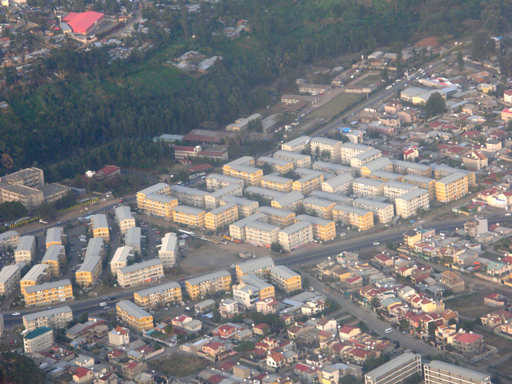6.4.2 Integrated Housing Development Programme
The Integrated Housing Development Programme (IHDP) is a government-led programme to provide new, affordable housing for low- and middle-income people. The programme began in 2005 and has been implemented in 56 towns across the country to date, but the greatest impact has been seen in Addis Ababa, where new condominium blocks are springing up all over the city (Cities Alliance, 2012) (Figure 6.7). Outside the capital the programme has since been suspended, partly because the multi-storey condominiums were unpopular and considered ‘an eyesore’ in smaller, low-rise towns (UN-Habitat, 2011).

The IHDP aimed to construct 360,000 new housing units in condominium blocks, to be built at low cost, plus 9000 commercial units, with the creation of 200,000 jobs and promotion of 10,000 small enterprises in the construction industry (UN-Habitat, 2011).
The standard design of IHDP condominium has five storeys, with a mixture of studios and 1-, 2- and 3-bedroom apartments. Each unit has a bathroom with shower, flush toilet, and basin, and a separate kitchen. The units are sold, not rented, and are transferred to owners by a computer-based lottery system. Owners have to pay a down payment. For studios and 1-bedroom units this is 10% of the price, for 2-bedroom units it is 20%, and for 3-bedroom units 40%. The remainder is paid by monthly mortgage payments with interest. Thirty per cent of units are allocated to women.
By 2011, 171,000 units had been built (UN-Habitat, 2011). The programme has been very popular and demand has exceeded supply from the outset. Its main achievements are a dramatic increase in the number of homeowners and an improvement in the living conditions of many thousands of people. In addition, the programme has created 176,000 jobs, mainly for mineral extraction and construction workers (Cities Alliance, 2012).
Despite these successes, a number of problems have arisen. Electricity and water companies have been slow to provide essential services because they lack the resources to meet the new demands. Approximately 50% of condominium sites are behind schedule because of delays with the infrastructure. The absence of a sewerage network is an obvious problem (only 3% of Addis Ababa is sewered) (UN-Habitat, 2011). Solid waste management is a more positive story, however, with opportunities for small enterprises to set up and organise door-to-door collection services.
The initial designs for the condominium sites included green spaces, but this idea was dropped when the housing density had to be increased. The sites had allocated spaces for commercial use, such as shops, food and drink outlets. There were also plans for communal buildings for social activities, but where these were built, the continuing management has been problematic. On other sites the communal buildings were not built, in order to reduce costs.
Affordability is a major issue. The costs put the units beyond the reach of many people on low incomes. Many people who have managed to make the initial down payment find that the monthly payments are too much, so they rent out all or part of the unit to other people. This has the unforeseen benefit of increasing the supply of rental housing in the city, but if people decide to share their unit this can result in overcrowded conditions. The higher down payment for the larger units can also cause overcrowding because families opt for a smaller unit than they need to reduce the initial cost.
Most building so far has been on the edges of Addis Ababa in areas with little or no employment opportunities. This forces people to travel into the city for work, which is costly for them and adds to the pressures on the transport system. There has also been criticism of the construction quality and the design of some of the blocks. The ongoing management of the sites, especially the shared areas, is also essential for the long-term sustainability of the programme (UN-Habitat, 2011).
What aspects of the IHDP’s condominium sites do and do not correspond to UN-Habitat’s principles for sustainable neighbourhood planning (Box 6.1)?
The condominium sites have wide streets and some space between the blocks but they are also compact and have a high density of people. There is some mixed land use, with units allocated for commercial purposes, but the location on the edges of the city means there are limited sources of employment. The sites are predominantly for the single function of housing. The condominiums are designed for low- and middle-income families, so there is little social mixing.
6.4.1 National Urban Development Policy
